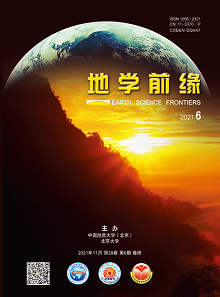|
|
Earth system science research on earthquake mechanisms: Theory and validation of a new model
ZENG Zuoxun, CHEN Zhigeng, LU Chengdong, YANG Yu, CHEN Kangli, XIANG Shimin, DAI Qingqin, ZHANG Jun, DENG Yanting, FU Yan, DU Qiujiao, LIU Lilin, YANG Weiran
2021, 28(6):
263-282.
DOI: 10.13745/j.esf.sf.2021.9.5
A combined model of seismic source cavity and latching fault for earthquake mechanism is proposed. Deep seismic source cavities are formed by the anomaly gravity flow and forced vibration of the high temperature, high pressure asthenosphere materials in the complex phase transition space of the temperature field. It is common that the mantle fluids, driven by temperature and pressure differences, are transferred from mantle to crust to form source cavities for shallow earthquakes. Due to the temperature rise, the continuous partial and/or full melting of the wallrocks cause the cavity to expand, increasing the pressure inside the cavity. When the effective pressure (i.e., the difference between the internal pressure and the pressure of overlying crust) inside the cavity reaches the failure strength of wall rock at the edge or top of the cavity where wall rock is connected to the relatively brittle active fault(s), the cavity comes to a crucial state. When the asthenosphere continues to supply energy to the cavity, or when the cavity is triggered by earth tide resulted from the alignment of the celestial bodies to the source region, cryptoexplosion occurs to release the energy accumulated in the cavity plus the strain energy accumulated from regional tectonic stress field acting on the latching active fault(s). In this model, the intracavity energy released from cryptoexplosion is positively correlated with the cavity size, while the released strain energy is related to the size and asperity of the fault(s) as well as to the intensity of the regional tectonic stress field. The junction between the source cavity and the relatively brittle active fault(s) is a potential hypocenter of the impending earthquake. Source cavities generally develop in 1 to 13 days, averaging 7 days, from entering the crucial state to cryptoexplosion. After long-term observations we theorize that the abnormal phenomena, such as drought, temperature rise, sea surface temperature rise and water vapor release, often occur in the potential earthquake area before the earthquake. Direct evidence for the seismic source cavity cryptoexplosion are also introduced.|||Based on long-term observations and the seismic source cavity model, we give full affirmation to seismic clouds which have long been denied by seismological and meteorological circles. We consider that the gravitational wave generated by the cavity oscillation in the air, and the magnetic field induced by the eddy flow of fluid in the cavity acting on water vapor, are the physical mechanism of the formation of seismic clouds. Here we show the satellite images of releasing aqueous vapour prior to the M 7.0 Haiti earthquake on January 13, 2010, the M 8.2 Gorkha (Nepal) earthquake on April 25, 2015, and the M 7.0 Jiuzhaigou earthquake on August 8, 2017. By use of seismic tomography technique, the shape and size of the seismic source cavity for the M 8.0 Wenchuan giant earthquake (May 12, 2008) were determined. We found that the hypocenter of the Wenchuan earthquake lies at the junction between the top of the source cavity and the Longmenshan brittle active faults. We performed statistical analysis on the gravity disturbance data of the Jiuzhaigou earthquake area and its vicinity, collected during the 12 years since January 1, 2002, and on the catalogue of the area's earthquakes equal or above M 3.0. The results show that the equivalent elevation amplitude change attributable to gravity anomaly was 3.9 cm before the M 6 earthquake, and the magnitude of earthquake was proportional to the magnitude of elevation oscillation by statistical comparison. Based on the tectonic stress field obtained from 108 fault plane solutions for the Bohai Bay and its periphery, we found that there are abnormal stress fields above and to the northeast side of the source cavities in both the Tangshan and Haicheng earthquakes. This points to the effect of high pressure in the source cavity on regional tectonic stress field.|||By using the abnormal sea surface temperature, ZENG Zuoxun successfully predicted the epicenter location of the M 6.7 earthquake on May 1, 2021 off the coast of Honshu Island, Japan. Using drought and temperature anomalies, he correctly predicted two days in advance the epicenter location of the M 4.8 Chuxiong earthquake on June 24, 2021 in Yunnan Province.|||Based on the frequency characteristics of the geoelectric field generated by the eddy flow of ions in the crucial state of the cavity, we developed a DD108 geoelectric instrument. With the single station observation we can predict (within 1-13 days after the occurrence of the anomaly, averaging 7 days) the occurring time and the magnitude of a coming earthquake. Some examples are shown in the paper, including the M 7.0 Jiuzhaigou earthquake in 2017, and the M 7.4 Qinghai Maduo and M 7.1 Mexico earthquakes in 2021.
References |
Related Articles |
Metrics
|

